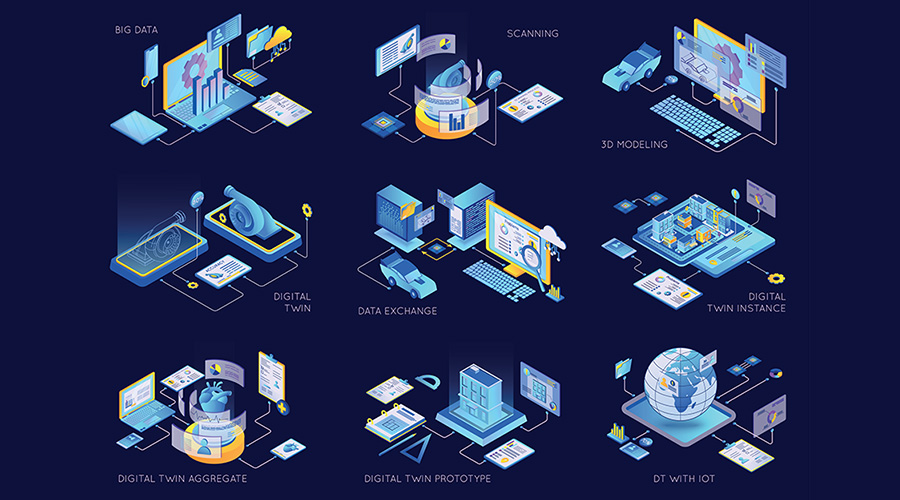Navigating the Digital Horizon: Transforming Skilled Trades
A new survey from NFPA shows the pivotal role of digital tools for collaboration and fire safety.
By Shawn Mahoney, Contributing Writer
In the dynamic landscape of skilled trades, digital transformation has become more than a trend— it's a necessity. The surge in the use of digitally enabled tools and training programs within the fire, electrical, and life safety sectors underscores a fundamental shift in how professionals approach their work. Recent results from a National Fire Protection Association (NFPA) survey emphasize the pivotal role of digital transformation in enhancing collaboration, workflow, and training initiatives. Furthermore, they shed light on some barriers and how the skilled trades can overcome them.
Improving Collaboration and Workflow
Many of the most pervasive challenges faced in the skilled trades today can be mitigated, if not altogether solved, by the use of digital tools. When asked to identify the top obstacles within the design build process, NFPA survey respondents named collaboration (29 percent) and lack of access to resources (23 percent) as their top two challenges.
Luckily, digital tools are especially adept at improving real-time collaboration and democratizing access to resources for large audiences. Take digitized codes and standards as an example. Instead of having to lug around separate collections of physical code books, teams can have access to the same hub of digitized books no matter where they are or what device they have. They can also use this collaborative resource to share notes, create collections, and pass down veteran knowledge seamlessly. As a proof point: 61 percent of survey respondents saw increased collaboration and streamlined processes as a direct result of implementing digital tools into their workflows.
Evidently, the value of digital transformation is slowly but surely proving itself. The skilled trades industry is experiencing a digital renaissance, with 80 percent of professionals incorporating digital tools into their daily routines. Computers, tablets, phones, and specialized platforms have become indispensable for many, facilitating seamless collaboration and workflow optimization each day. In fact, a fourth of skilled trade workers say they can’t live without these job-enabling digital tools.
However, despite these digital advancements in the skilled trades, challenges persist for widespread use. One third of professionals report that they do not use any digital tools in their daily workflows, and economic uncertainties have led 42 percent of professionals to cut spending on new tools, potentially hindering the industry's full potential in embracing digital solutions.
Moving forward, it will be critical for leaders to prioritize digital transformation to gain the key benefits in collaboration and access to resources. A more collaborative, knowledgeable workforce results in better service, customer satisfaction, and ultimately, safety.
Empowering the Workforce Through Digital Training
Digital tools have great utility in training initiatives as well, especially amid ongoing challenges in implementing effective education and certification programs. Budget constraints have led to a reduction in training allocations for 26 percent of professionals, while 67 percent struggle with time constraints. Additionally, determining the right program remains a challenge for 46 percent of professionals, highlighting the need for accessible and user-friendly training options.
In the face of these challenges, online training and development programs have emerged as catalysts for empowering the workforce. Two-thirds of professionals participate in multiple training sessions annually, and among those trainings, live and on-demand virtual formats are the most popular. The benefits are clear: an overwhelming 87 percent of professionals agree that digital tools save significant time during training, making skill development more efficient and accessible, while another 86 percent agree that digital tools make training easier.
Ongoing training and education are paramount in an ever-evolving fire and life safety landscape, making it important for leaders to invest in solutions that best fit the needs of employees and facilitate efficient processes. The survey findings point to a continuing trend of adopting emerging digital training formats, from asynchronous webinar-style courses to virtual and augmented reality. These formats represent the future of skilled trade learning.
A Digital Future
The skilled trades industry is on the brink of a digital revolution. As professionals increasingly embrace digital tools, collaboration will become more seamless, leading to more efficient processes and improved outcomes. Simultaneously, investing in accessible digital training programs will be essential to empowering the workforce, ensuring they remain competitive and adaptable.
But to fully harness the potential of digital transformation, industry stakeholders must address existing challenges. By focusing on affordable solutions, promoting innovative training formats, and providing guidance in selecting appropriate programs, the skilled trades sector can create a future where technology and expertise empower one another.
In this digital age, the skilled trades industry's ability to adapt, collaborate, and invest in continuous learning will define its success. By embracing digital tools and fostering a culture of ongoing learning, professionals can navigate the digital horizon with confidence, ensuring a prosperous and technologically advanced future for the entire sector.
Shawn Mahoney is Senior Engineer, Technical Services for NFPA.
Related Topics:












